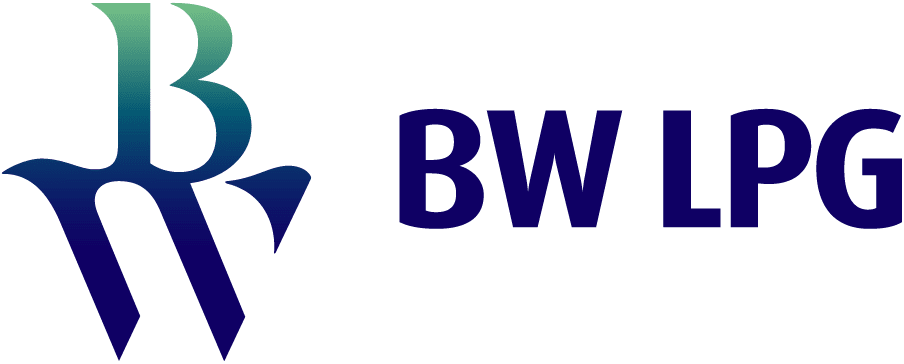Climate-Related Risks & Potential Financial Impacts
We discuss the climate-related transition and physical risks that we face in our daily operations, and how we plan to mitigate them.
Transition Risks
Risks related to the transition to a lower-carbon economy.| Type of Risk | Time Frame | Potential Risks | Potential Impact | Potential Mitigation |
|---|---|---|---|---|
| Policy and Legal | Short to Mid (0-5 years) | Shipping will be impacted by the implementation of climate market-based measures. The sector would be subjected to more onerous reporting requirements for emissions, and additional climate-related clauses in charter-hire agreements have to be crafted with caution. Additional limitations on use of conventional fossil-fuel based bunkers would also affect current bunkering operations. | Using conventional fossil based fuels will be more expensive as a result of carbon levies. In order to comply with emissions laws, ships may slow down, restricting service capacity. It could be necessary to retire assets early if they are unable to comply with requirements. Charter-hire charges could increase to cover rising operating costs and new technological investments. | Participation in the carbon market and the use of public-sector incentives can reduce cost exposure. In the long run, early adoption of next-generation vessel technology and industry cooperation for the creation of a low-emissions fuel supply chain can be beneficial and prevent the early retirement of assets. |
| Technology | Short to Long (0 - 5+ years) | Rapid developments in technology will render certain systems obsolete. The needs and requirements of internal and external stakeholders could be delayed or not met, resulting in inefficiencies in operations and potential non-compliance with regulations. | Existing equipment may be prematurely retired. This may result in higher capital expenditures for modernising IT infrastructure, introducing new technologies, and investments in user training. | To advance our knowledge in new technology, we conduct thorough research and analysis before making any investments in next-generation technology. This can also include risk and impact analysis on current procedures and business function requirements. |
| Market | Long (5+ years) | The LPG supply and demand may shift as the world switches to cleaner-burning energy and as a result of increased geopolitical tensions. Global VLGC fleet capacity could fluctuate due to a combination of new regulations, shipping inefficiencies and orderbook. | Reduction in import/export volumes and oversupply of VLGC fleet could lead to a decline in freight rates. The price of LPG may increase as a result of unfavourable regulatory changes or a decrease in supply. | Our Product Services division helps to support commercial utilisation on our vessels. Taking the lead in low-carbon shipping and reviewing trading patterns can reduce inefficiencies. |
| Reputation | Mid to Long (2 – 5+ years) | Stakeholders are increasingly concerned about the industry’s long-term financial viability due to its pollutive nature. | Non-compliance with regulations and indifference to stakeholder expectations can impact our operations, and reduce the trust stakeholders have in us. | We constantly aim to improve our fleet efficiency and ensure regular maintenance to meet upcoming regulations. To preserve service quality and meet changing stakeholder needs, research and development (R&D) of next-generation technology for low carbon vessels is necessary. |
| Operational | Short to Mid (0 - 5 years) | The use of alternative fuels and new technology in the sector raises safety concerns. Regulatory compliance, delays or interruptions may affect our vessels, and suppliers may experience service disruptions as a result of raw material shortages or supply chain problems. | Hazards could increase crew safety risks resulting in operational delays. Increased training expenses, potential penalties for violating charter-hire agreements, and voyage costs from rerouting will impact our bottom line and ability to fulfil our commitment to operational excellence. | As a means to support new procedures on board and ashore while minimising potential disruptions, we conduct additional crew training and enhance hazard risk assessments and communication. To create a resilient supply chain, we ensure supply chain diversification and continuously improve our third-party risk assessment and compliance audit. |
| Financial | Short to Long (0 – 5+ years) | The financial sector, including banks and capital markets, may reduce their financing and investments in shipping sector in favour of sectors that are less pollutive as the attention on climate change intensifies. | could see higher liquidity risk exposure as well as potential for downward asset repricing. Our cost of borrowing could go up as a result of a declining investor base and failure to comply with sustainability benchmarks. | As we endeavour to maintain alignment with demands from the financial industry, we keep stakeholders informed of our ESG developments. We continue to build ties with financial stakeholders through regular conversations with lenders and investors and also diversity our source of financing. |
Physical Risks
Risks related to the direct impacts on assets from climate-related events, and indirect impacts on global supply chain and resources.| Type of Risk | Time Frame | Potential Risks | Potential Impact | Potential Mitigation |
|---|---|---|---|---|
| Acute | Long (5+ years) | Hurricanes and typhoons are examples of extreme weather events that are becoming more severe and frequent. Extreme weather can endanger lives and vessels, lengthen travel times, and hasten the deterioration of vessels from weather-related damage. | To guarantee the safety of our crew, we may experience delays in the delivery and pay more for repairs. Any cargo loss could result in increased costs. The useful life of our vessels may shorten and operational costs may rise as a result of weather-related damage. Labour shortage as a result of accidents could increase pressure on crewing costs. | We investigate the potential effects of extreme weather occurrences on operations through scenario analysis. In particular where risk areas are recognised, we use available technology to analyse and forecast extreme weather conditions and optimise vessel rerouting. In order to maintain supply chain resilience, we collaborate with suppliers to monitor and evaluate risks. Maintaining strong relations with P&I Clubs ensures a climate-adapted insurance cover, which provides the most protection in the event of extreme weather catastrophes. |
| Chronic | Short to Mid (0 – 5 years) | Long-term shifts in climate patterns threaten operational excellence and risk management measures. | Ports could adjust fees to cover expenditures associated with sustained maintenance requirements due to sea level rise and chronic heat waves. Trade routes that are disrupted may lengthen and increase freight. Costs associated with crewing may rise as a result of disrupted crew changes. | [As above] |
Scenario Analysis
We use scenario analysis as a technique to stress test the adaptability of our business and strategy to disruptions as well as our capacity to respond to changes or uncertainties that could have an impact on performance. While the tool is not intended to predict the future, we gain understanding of the potential long-term effects of the physical and transitional risks identifying opportunities associated with climate change on our business. We examine potential outcomes, the presumptions on which they are predicated, and potential courses of action when addressing potential opportunities and risks associated to climate change.
Scenario Selection
In 2021 we sought to include a range of physical and transition risks in our analysis. This year, we take our assessment to the next level by considering driving forces in our risk scenarios and mapping out the time horizons of each risk. We identified key driving forces for BW LPG’s business performance. These driving forces set the boundaries for the scenarios and our future scenario selection. We took into account trends within the shipping industry and the market which can impact economic activity, governance structures, social values and technological change. Economic and energy changes were also used to analyse and identify our key considerations to navigate climate change.
These drivers form the basis of our scenario analysis and we are working to enhance it further with assumptions from reputable organisations such as the International Energy Agency (IEA), International Renewable Energy Agency (IRENA), Intergovernmental Panel on Climate Change (IPCC), and Science Based Targets (SBTI).
| Risk | Drivers | Assessment | Consideration |
|---|---|---|---|
| Transitional | Climate-related transition risks resulting from exposure to the shift to a lower-carbon economy through changes in market, technology, policy, and the law. The global climate transition will lead to significant transformations within sectors and throughout the whole economy, depending on the type, pace, and focus of these changes. | Depending on the nature, speed, and focus of these changes, the global climate transition will create meaningful shifts within shipping and across the entire economy. A key unknown within the context of the global climate transition is the degree of orderliness and the timing under which the transition will unfold. | BW LPG seeks to comprehend the potential ramifications of a disorderly and delayed transition versus a more gradual and coordinated outcome led by IMO. |
| Physical | Extreme weather events and rising global temperatures can have an impact on operations, causing infrastructure and facilities to fail and disrupting supply chains. | Uncertainty surrounds the degree of warming that may occur and the associated implications for the planet’s climate over the long term. | BW LPG aims to review how various increases in global temperatures will impact our physical risk. |

